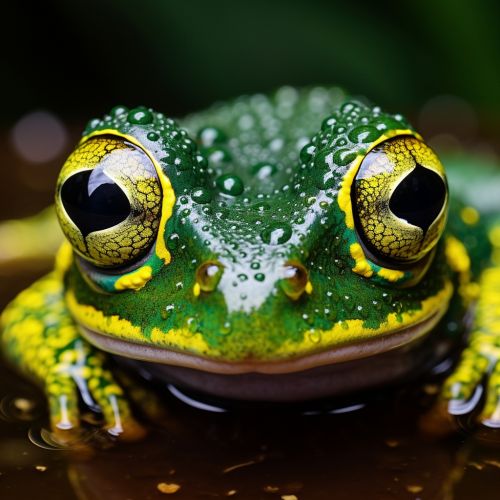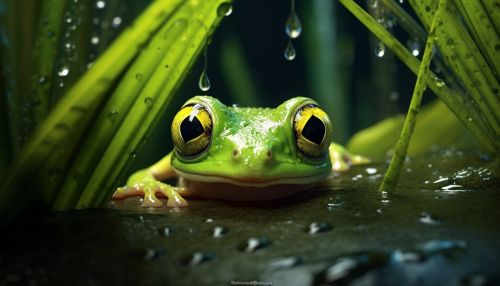Frog
Taxonomy and Evolution
Frogs are a diverse and largely carnivorous group of short-bodied, tailless amphibians composing the order Anura. The oldest fossil "proto-frog" appeared in the early Triassic of Madagascar, but molecular clock dating suggests their origins may extend further back to the Permian, 265 million years ago.
Characteristics
Adult frogs generally have a carnivorous diet consisting of small invertebrates, but omnivorous species exist and a few feed on plant matter. Frog skin is glandular, with secretions ranging from distasteful to toxic.


Distribution and Habitat
Frogs are widely distributed, ranging from the tropics to subarctic regions, but the greatest concentration of species diversity is in tropical rainforests. They occur in a wide range of habitats, from terrestrial, freshwater, and marine ecosystems, and some species are adapted to arid environments.
Life Cycle
The life cycle of a frog consists of three stages: egg, larva, and adult. The larvae of frogs are known as tadpoles and are typically found in freshwater bodies such as ponds and streams.
Conservation
Frog populations have declined significantly since the 1950s. More than one third of species are considered to be threatened with extinction and over one hundred and twenty are believed to have become extinct since the 1980s.
